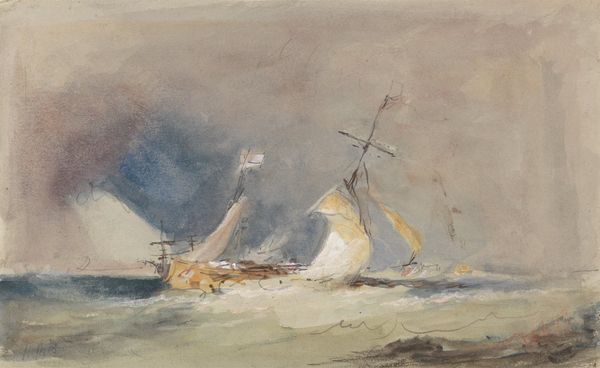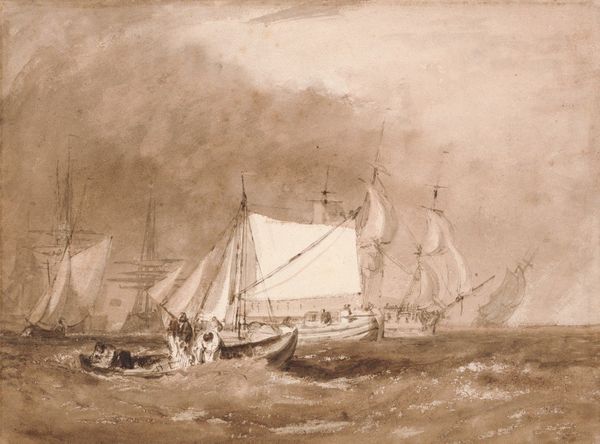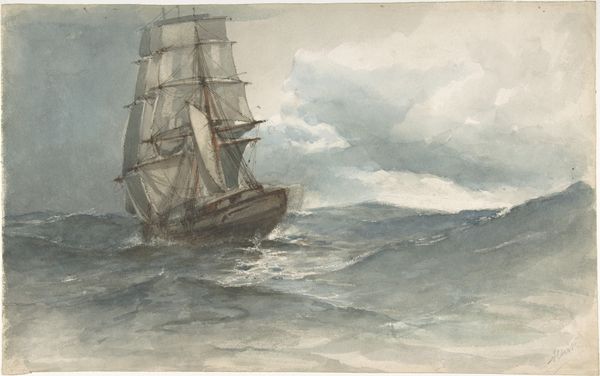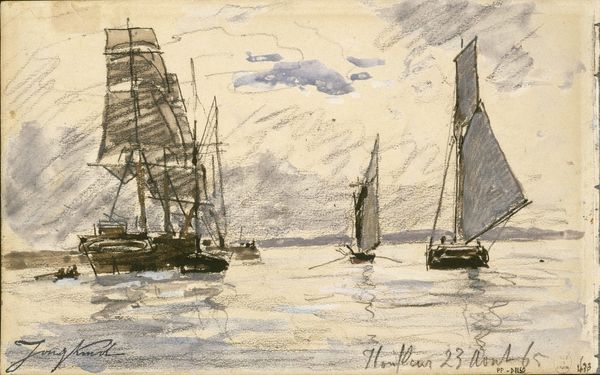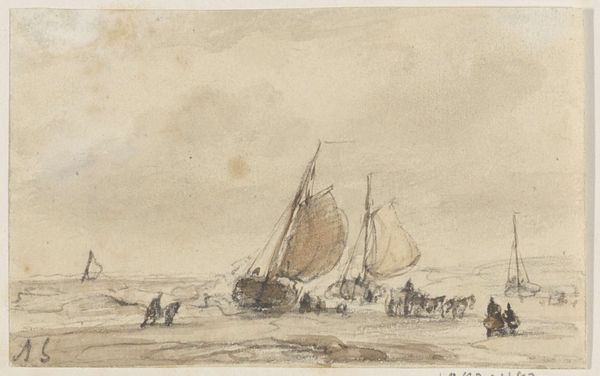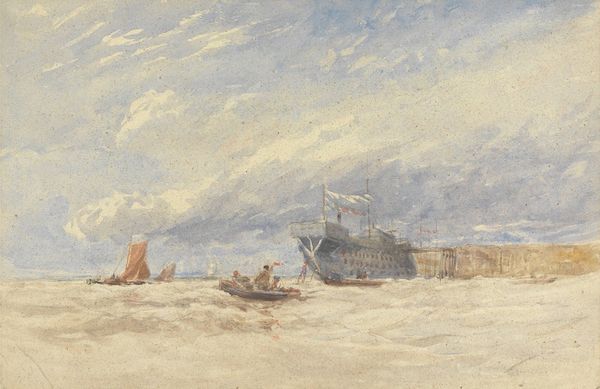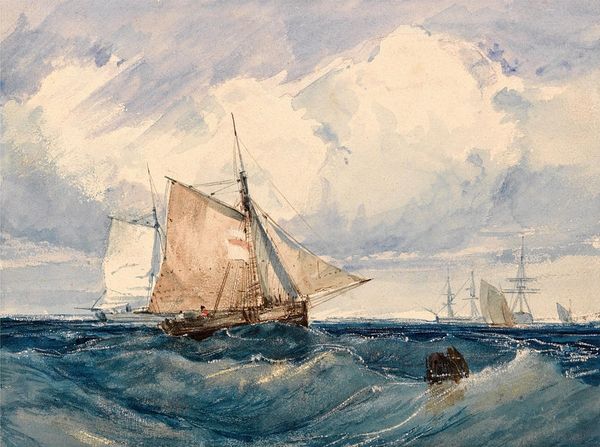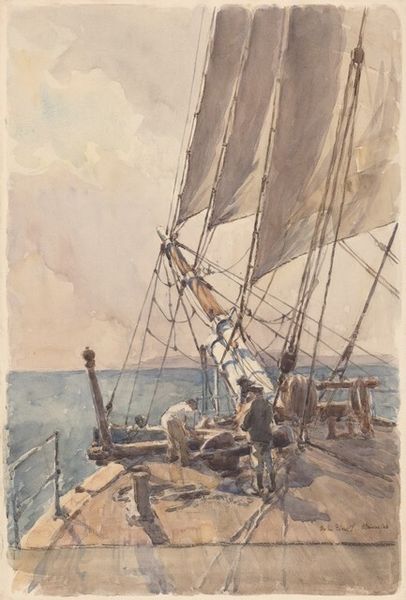
drawing, plein-air, watercolor
#
drawing
#
dutch-golden-age
#
impressionism
#
plein-air
#
landscape
#
watercolor
Copyright: Public Domain: Artvee
Editor: So this is "Dutch Fishing Boats" by Johan Barthold Jongkind, created in 1870. It’s a watercolor drawing, and what strikes me immediately is its loose, almost unfinished quality. It feels very immediate and captures a sense of movement in the water. What aspects stand out to you? Curator: It is all about labor here, isn't it? Consider the physical act of Jongkind, an early plein-air painter, facing the elements to create this work. The immediacy you noticed wasn't just a stylistic choice, but also came from necessity; to quickly capture a fleeting scene. Watercolor, a relatively inexpensive and easily portable medium, facilitated that speed. We can ask about what made this kind of quick depiction and transportation possible – what other forms of material culture had to be in place to let Jongkind paint and market such works? Editor: That’s a perspective I hadn't fully considered. Thinking about the accessibility of materials changes my perception. Were watercolors typically used for "serious" art like this at the time, or were they more associated with, say, sketching? Curator: That's a good question. Watercolor, while esteemed for botanical illustrations and topographical studies, was fighting for its place in the fine art hierarchy. By creating "finished" works like this en plein air, artists like Jongkind were challenging that hierarchy, elevating not only the medium but also the subject matter— everyday life and landscapes. Think about how the expansion of the art market facilitated this. Now the urban collectors needed smaller, decorative pieces. What does it mean that this artwork become a commercial product in an emerging market of small art galleries in expanding cities? Editor: I see, so he was both responding to and shaping the art market. I initially saw the drawing as just a pretty scene, but thinking about the social context makes it so much richer. Curator: Exactly! It’s a glimpse into the changing landscape of art production and consumption in the late 19th century. It tells the story of artists finding new materials, ways of working, and places in society, for both their art and their labor.
Comments
No comments
Be the first to comment and join the conversation on the ultimate creative platform.

